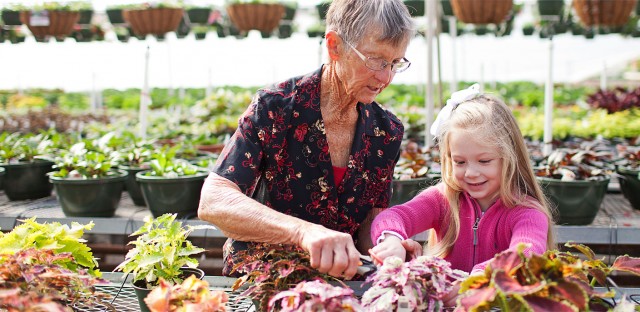Dividing Perennials
Keep Your Perennials Healthy!
Did you know that you can get more perennials from the perennials that are already planted in your yard? It’s true, you can. Most perennials can be (and need to be) divided, which simply means separating young, already rooted offshoots from mature perennials and planting them elsewhere. Therefore, we basically divide perennials to get more from the plants that are already established in our yard, and also to keep our existing perennials healthy.
The simplest propagation practice in perennial gardens is division. New plants created by this method develop the same growth traits and flower color as the originals. This is a great way to create new beds in your yard with all of your favorites that you already have. It is also a fun way to share and swap with your neighbors and friends.
Division is also, and most importantly, a means of maintaining your mature perennial plantings. Many perennials look their best only when regularly divided. Many perennials, if not divided, tend to deteriorate at their centers, while growing actively around the edges. If you do not divide your mature perennials, you may end up with unsightly, dead-looking patches in the midst of your lovely blooming clumps. You may have noticed this with plants such as hosta, chrysanthemum or gaillardia.
Other perennials, such as rudbeckia, outgrow their spaces overtime, and start crowding the neighboring plants and make the whole flower bed more susceptible to disease. Perennials also tend to bloom less (or not at all) if they get too crowded. Division of such plants thins them out and permits air to circulate through the bed once more.
Perennials that need to be divided should be tackled while they are dormant or growing vegetatively, not when they are preparing to bloom. For the most part, this means early spring to early summer, as soon as the growing crowns can be seen. There are exceptions to this rule, such as plants that are early spring bloomers, which should be divided after flowering. Working on a cool, cloudy day will help to keep the plants’ roots moist while they are exposed to the air.
Basic instructions for dividing and replanting new divisions:
1. Using a spading fork, carefully dig deeply around the plant to loosen it. Try not to tear too many roots. Use the fork to lift the clump out of the soil once you have loosened it all the way around.
2. Depending on the plant, roots can be divided by pulling the root mass apart with your hands, cut apart with a sharp knife, or cut with a sharp shovel. Discard any plants that appear to be unhealthy, or are missing most of their roots.
3. Dig a new planting hole and, if necessary, work compost, leaf mold or fertilizer into the soil. Be sure to plant the new division at the same depth it was previously planted. Finish planting by filling the hole with soil around the base of the plant, pressing firmly to set.
4. Water the plant thoroughly and remember that newly planted perennials should be watered regularly throughout the season. Adding a layer of mulch will help to hold moisture and prevent weeds. Although, your newly planted perennials may not appear to grow much during the first season, it will be growing many new roots to support itself in years to come.
A few well known perennials recommended for division: Achillea (yarrow), Ajuga (bugleweed), Anemone (windflower), Astilbe (false spirea), Brunnera, Campanula (bellflower), Delphinium, Dianthus (pinks), Dicentra (bleeding heart), Geranium (cranesbill), Hosta (plantain lily), Iris, Lamium (dead nettle), Lobelia (cardinal flower), Monarda (bee balm), Nepeta (catmint), Phlox, Primula (primrose), Pulmonaria (lungwort), Rudbeckia (coneflower), Sedum (stonecrop), Solidago (goldenrod), Stachys (lamb’s ears), Tricyrtis (toad lily), Veronica (speedwell), Viola (violet), Hemerocallis (daylily), Kniphofia (poker plant), Echniacea (coneflower), Ornamental Grasses
This article provides you with a good foundation for dividing perennials. Although, we recommend purchasing a garden book for specific varieties, such as iris, peonies, hasta, bulbs, rhizomes, etc., as each type of plant has very specific needs.
Happy Dividing!
MaryAnn, Perennials
FairviewGreenhouses & GardenCenter




